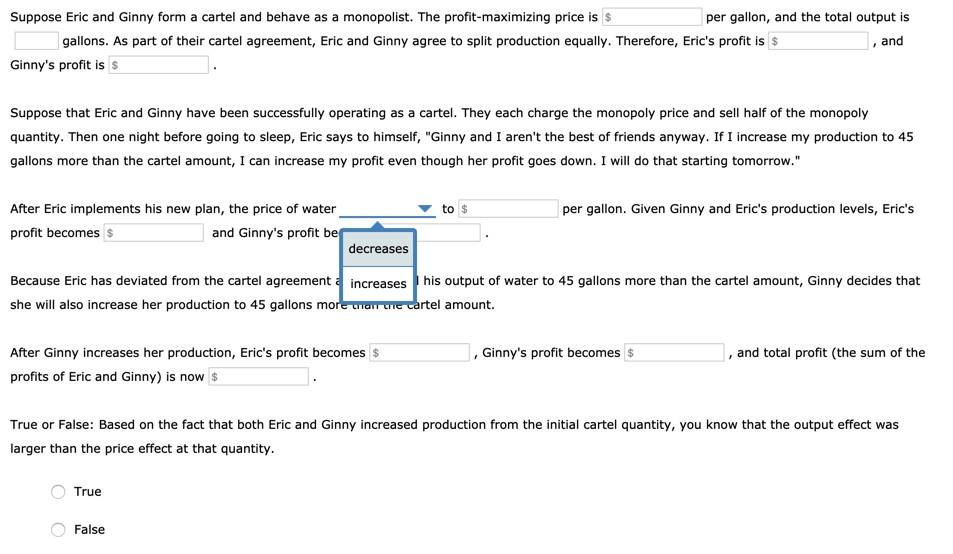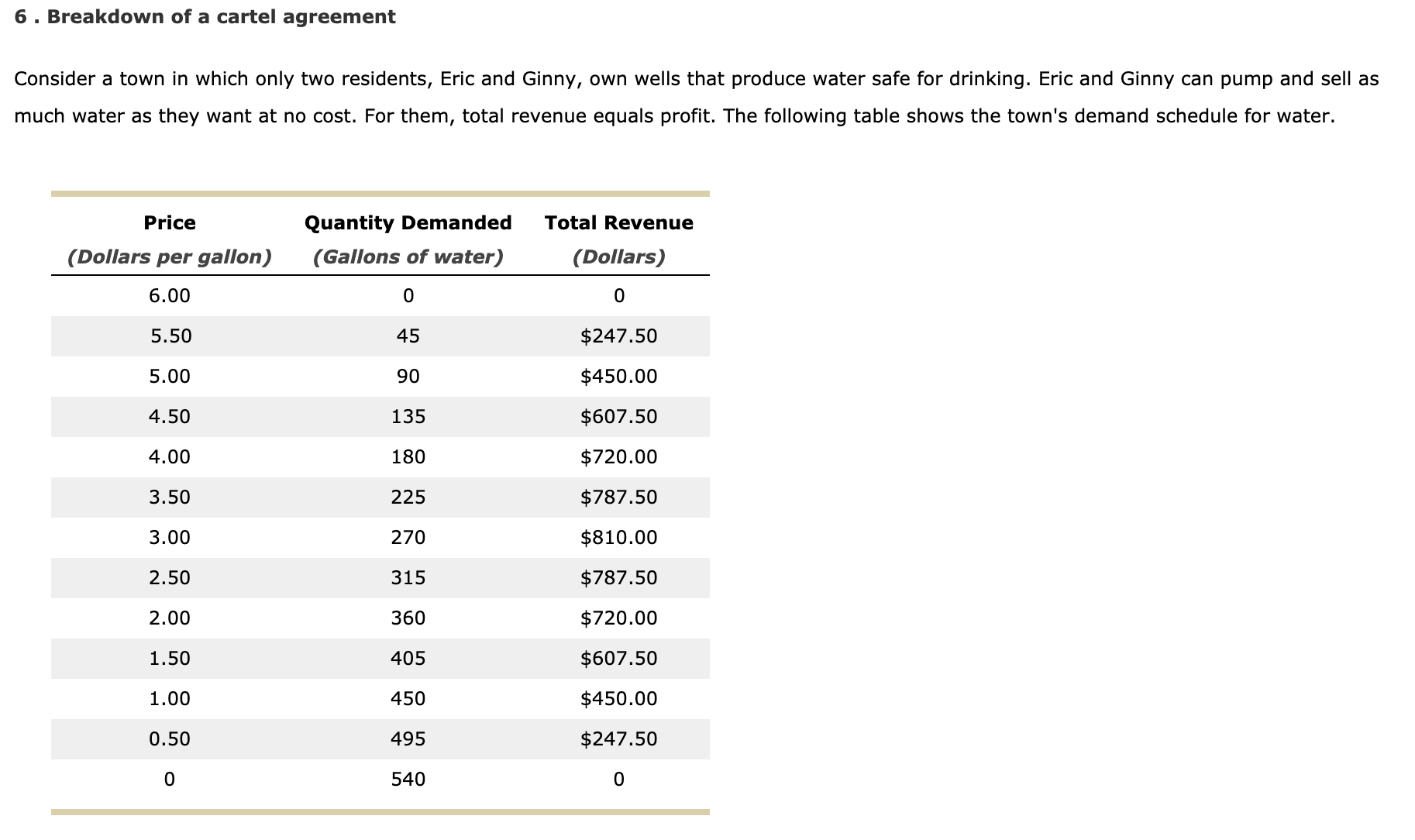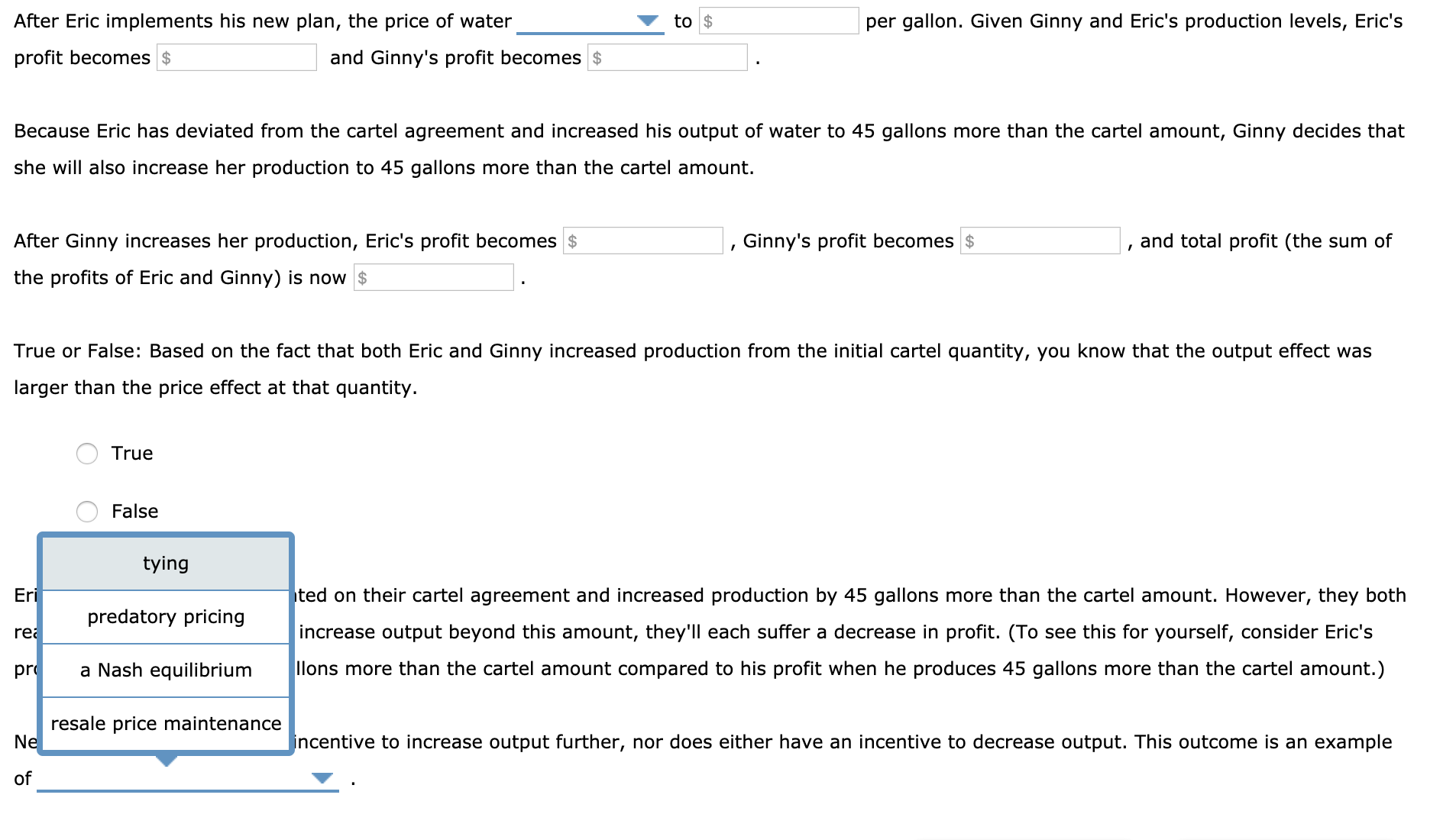Microeconomics Problem 6 on Mindtap
Suppose Eric and Ginny form a cartel and behave as a monopolist. The profit-maximizing price is $ per gallon, and the total output is gallons. As part of their cartel agreement, Eric and Ginny agree to split production equally. Therefore, Eric's profit is $ , and Ginny's profit is $ Suppose that Eric and Ginny have been successfully operating as a cartel. They each charge the monopoly price and sell half of the monopoly quantity. Then one night before going to sleep, Eric says to himself, "Ginny and I aren't the best of friends anyway. If I increase my production to 45 gallons more than the cartel amount, I can increase my profit even though her profit goes down. I will do that starting tomorrow." After Eric implements his new plan, the price of water to $ per gallon. Given Ginny and Eric's production levels, Eric's profit becomes $ and Ginny's profit be decreases Because Eric has deviated from the cartel agreement : increases | his output of water to 45 gallons more than the cartel amount, Ginny decides that she will also increase her production to 45 gallons more than the cartel amount. After Ginny increases her production, Eric's profit becomes $ , Ginny's profit becomes $ , and total profit (the sum of the profits of Eric and Ginny) is now $ True or False: Based on the fact that both Eric and Ginny increased production from the initial cartel quantity, you know that the output effect was larger than the price effect at that quantity. True FalseEric and Ginny have each cheated on their cartel agreement and increased production by 45 gallons more than the cartel amount. However, they both realize that if they continue to increase output beyond this amount, they'll each suffer a decrease in profit. (To see this for yourself, consider Eric's profit when he produces 90 gallons more than the cartel amount compared to his prot when he produces 45 gallons more than the cartel amount.) Neither Eric nor Ginny has an incentive to increase output further, nor does either have an incentive to decrease output. This outcome is an example of v. 6 . Breakdown of a cartel agreement Consider a town in which only two residents, Eric and Ginny, own wells that produce water safe for drinking. Eric and Ginny can pump and sell as much water as they want at no cost. For them, total revenue equals profit. The following table shows the town's demand schedule for water. Price Quantity Demanded Total Revenue (Dollars per gallon) (Gallons of water) (Dollars) 6.00 0 0 5.50 45 $247.50 5.00 90 $450.00 4.50 135 $607.50 4.00 180 $720.00 3.50 225 $787.50 3.00 270 $810.00 2.50 315 $787.50 2.00 360 $720.00 1.50 405 $607.50 1.00 450 $450.00 0.50 495 $247.50 0 540 0 After Eric implements his new plan, the price of water v to $ per gallon. Given Ginny and Eric's production levels, Eric's profit becomes as and Ginny's prot becomes $ Because Eric has deviated from the cartel agreement and increased his output of water to 45 gallons more than the cartel amount, Ginny decides that she will also increase her production to 45 gallons more than the cartel amount. After Ginny increases her production, Eric's profit becomes $ , Ginny's profit becomes $ , and total prot (the sum of the prots of Eric and Ginny) is now $ True or False: Based on the fact that both Eric and Ginny increased production from the initial cartel quantity, you know that the output effect was larger than the price effect at that quantity. O True C: False tying ted on their cartel agreement and increased production by 45 gallons more than the cartel amount. However, they both predatory pricing increase output beyond this amount, they'll each suffer a decrease in profit. (To see this for yourself, consider Eric's a Nash equilibrium llons more than the cartel amount compared to his prot when he produces 45 gallons more than the cartel amount.) resale price maintenance _ _ . . _ _ _ ncentive to Increase output further, nor does either have an Incentive to decrease output. This outcome is an example Y










